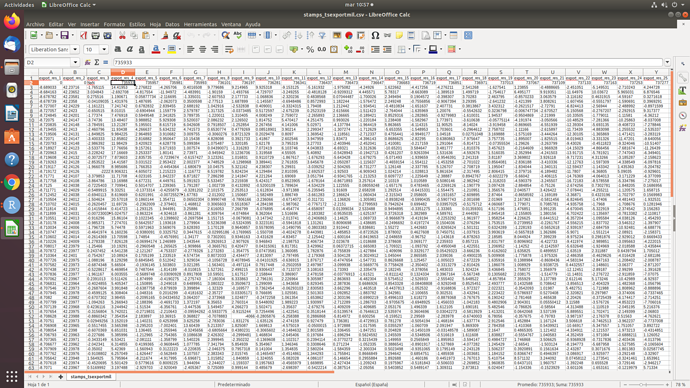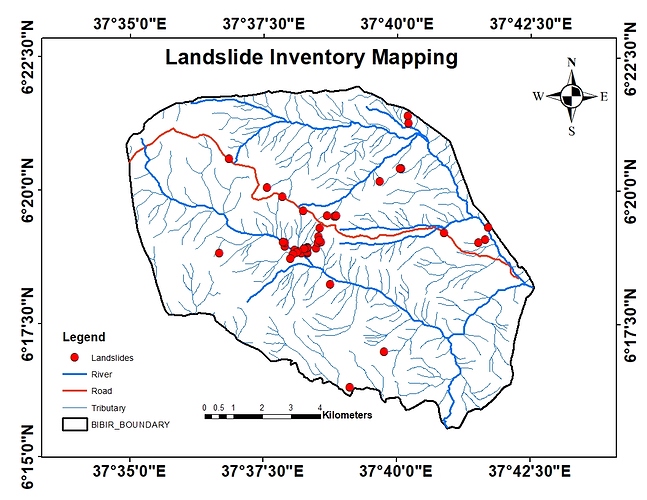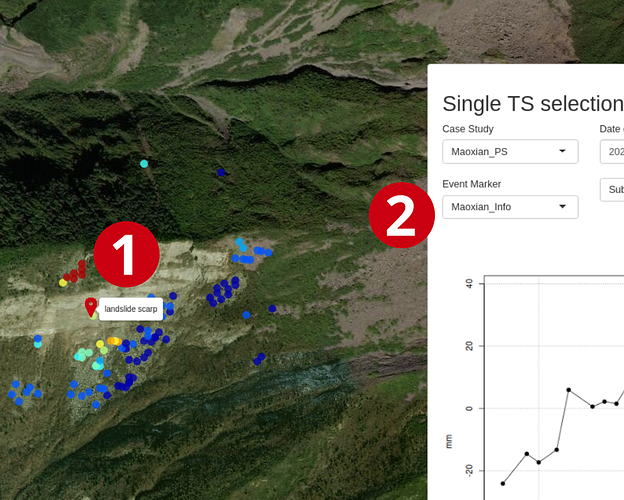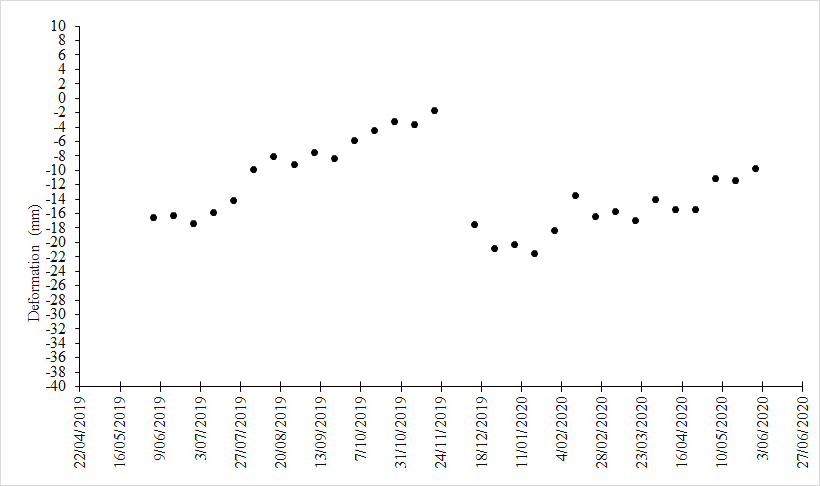Hi @endashdebru,
Your requested feature of adding markers with additional information to the map is ready for the Visualizer:
You are now able to add event marker. Such a marker is pictured at 1, it is interactive and when you hover over it with your mouse, the info text pops up.
You can select your event marker in 2 the selection input. You can also define — for no input (default). To ingest your own data to the app, you have to prepare a .csv file with this structure:
lon, lat, info
<WGS84_coords_in_num>,<WGS84_coords_in_num>,<info_text_as_string_or_num>
(have a look at ./event_marker/Maoxian_Info.csv in the app to see an example)
and put it in the ./envent_marker directory within the app directory (like adding a custom study site/StaMPS export)
you can add as many info points as you want in one .csv. However, keep in mind that ~500 is a limit because of rendering issues and performance of the app… so keep this number small.
caution
first this new feature is just roughly tested, hence it is not in the master branch on github, but on the 3.0-dev branch. You have two options to get the code:
git clone https://github.com/thho/StaMPS_Visualizer
cd StaMPS_Visualizer
git checkout 3.0-dev
ls
#will show you the new folders and scripts
there is no new package needed, open e.g. server.R and click “run app” in RStudio.
One thing that I recognized during first testing is, that the new event markers are clickable…but they will trigger a ps-plot of (mostly the last PS) I was not able to solve this issue quickly.
So to everybody how likes to test, give me a feedback what is good and what is bad with this new feature.
Cheers!







